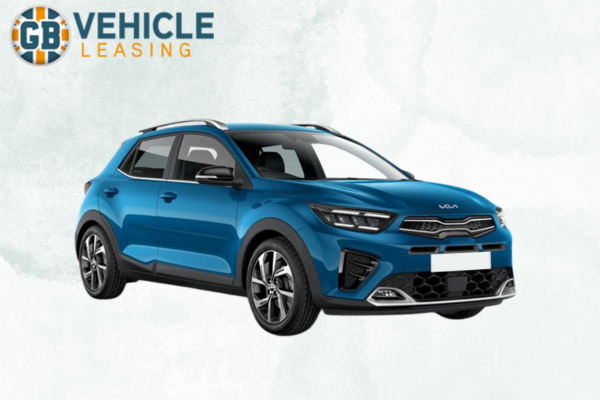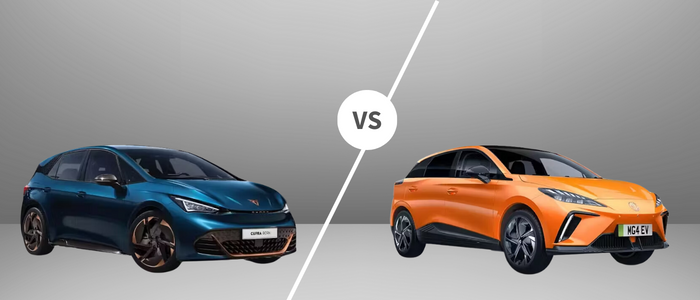
What is ESP on a car?
In today's fast-paced and ever-evolving automotive landscape, it's easy to get overwhelmed by the sheer number of acronyms and jargon that are thrown around. One term you may have come across is "ESP," and if you're not quite sure what it stands for or what it does, you're not alone. ESP, which stands for Electronic Stability Program, is a crucial feature found in many modern vehicles.
In this blog post, we'll take a closer look at what ESP on a car is, how it works, and why it's such a vital component in enhancing both safety and performance on the road. So, fasten your seatbelts and get ready to dive into the world of ESP.
What is ESP?
ESP is an advanced automotive safety feature designed to enhance a vehicle's stability and control while driving. Also known as Electronic Stability Control (ESC) or Vehicle Stability Control (VSC) in some regions, ESP is a crucial component of modern vehicles' safety systems.
The primary purpose of ESP is to prevent skids and loss of control in challenging driving conditions. It achieves this by continuously monitoring the vehicle's speed, steering angle, wheel rotation, and lateral acceleration. When ESP detects that the vehicle is about to exceed the driver's intended path due to factors like oversteer (rear-wheel skid) or understeer (front-wheel skid), it intervenes to bring the vehicle back under control.
ESP employs a combination of sensors and electronic control units to make split-second adjustments to individual wheel brakes and engine power. By selectively applying the brakes to specific wheels and, if necessary, reducing engine power, ESP can help maintain the vehicle's stability and prevent dangerous situations such as fishtailing.
Evolution of ESP
The concept of ESP was first developed in the early 1990s, and it was introduced as a safety feature in passenger vehicles later in that decade. The initial versions of ESP were relatively basic compared to today's advanced systems. They primarily focused on preventing skidding during abrupt steering manoeuvres and slippery road conditions.
Over time, ESP has undergone substantial evolution and improvement. Modern ESP systems are highly sophisticated, incorporating more sensors and enhanced algorithms. They can adapt to various driving conditions such as wet, icy, or uneven road surfaces. Moreover, some ESP systems work with with other safety features, such as ABS (Anti-lock Braking System) and traction control, to ensure comprehensive vehicle stability and control.
In some countries, ESP has become mandatory in all new passenger vehicles due to its proven effectiveness in reducing accidents and enhancing road safety. Its continuous development and integration into vehicles have played a pivotal role in preventing accidents, saving lives, and making driving safer for everyone on the road.
How Does ESP Work?
To understand how ESP works, let's delve into the underlying technology, sensors, and its operation. ESP relies on a network of sensors strategically placed throughout the vehicle. These sensors continuously monitor critical parameters such as wheel speed and steering angle. The Electronic Control Unit (ECU) or control module, serves as the brain of the ESP system. It receives data from the sensors and makes real-time calculations to determine the vehicle's stability status and whether intervention is needed.
When you're driving and come across a situation that could lead to a loss of vehicle stability, ESP helps to prevent it. ESP constantly evaluates the data from sensors. It pays attention to factors such as wheel speed discrepancies, excessive steering input, and lateral acceleration. If these parameters deviate from what's expected under stable driving conditions, ESP recognises a potential loss of stability.
When ESP detects that the vehicle is veering off its intended path due to factors like oversteer or understeer, it immediately recognises the issue. ESP can individually apply the brakes to specific wheels. For example, if the rear of the vehicle starts to slide out (oversteer), ESP will apply the brake to the appropriate rear wheel to counteract the skid and bring the vehicle back in line. In some cases, ESP may also reduce engine power to prevent further loss of control. For instance, if the front tyres lose traction during hard acceleration (understeer), ESP can limit engine output to regain stability.
The Benefits of ESP
ESP is not just another technological gadget in your car; it's a critical safety feature that can make a big difference in your driving experience. Here are the key benefits of having ESP in a vehicle:
Prevention of Skidding: ESP is mainly to prevent skidding and loss of vehicle control. Through automatically applying brakes to individual wheels or adjusting engine power, it can help maintain the vehicle's stability.
Reduced Risk of Rollovers: ESP also has a role in reducing the risk of rollovers, particularly in SUVs and taller vehicles. It senses the onset of an unstable situation and intervenes to keep all four wheels firmly planted on the ground.
Improved Traction: In slippery conditions, ESP can prevent wheelspin, ensuring that power is distributed effectively to the wheels with grip. This prevents your vehicle from getting stuck or losing control on icy or muddy roads.
Greater Maneuverability: ESP enhances your vehicle's ability to react to your steering inputs, making it easier to avoid obstacles or navigate through sudden lane changes.
All-Weather Capability: ESP is especially helpful in adverse weather conditions like rain, snow, or ice. It provides a safety net when traction is compromised, enabling you to drive with confidence even if the roads are challenging.
Peace of Mind: Knowing that your vehicle has ESP may boost your confidence when driving. As well, ESP is a useful feature for inexperienced or younger drivers who may not have the skills to effectively manage challenging driving conditions.

Does my car have ESP?
The first and easiest way to find out if your car is equipped with ESP is to consult your vehicle's owner's manual. The manual typically contains information about the vehicle's features and specifications, including safety systems like ESP. Also, many vehicles have a dashboard indicator light or button that signifies the presence of ESP or similar stability control systems. Look for a symbol that resembles a vehicle with wavy skid marks or the letters "ESP," "ESC," "VSC," or "DSC". If you see such a symbol when you start your car, it likely has ESP.
Additionally, there are online resources and databases that allow you to look up your vehicle's specifications based on its vehicle identification number (VIN). If you're still unsure about whether your car has ESP, you can contact the manufacturer's customer service. They should be able to confirm whether ESP is included in your car's configuration based on its VIN.
Keep in mind that the availability of ESP may vary depending on the make, model, trim level, and production year of your vehicle. Additionally, some manufacturers may use different names or acronyms for ESP or stability control systems.
Since 2014, every vehicle within the European Union (EU) has been required to have an ESP system installed. This requirement remains in effect for cars in the UK following Brexit.
Can ESP be turned off?
Yes, ESP or similar stability control systems in vehicles often come with a feature that enables drivers to turn them off temporarily. This feature is typically accessible via a button or switch on the dashboard or console. Nevertheless, it's important to exercise caution when considering turning off ESP, as it's a useful safety feature designed to prevent skidding and loss of control.
Turning off ESP may be necessary in certain situations, such as when you need to free your vehicle from deep snow or mud. However, keep in mind that when ESP is disabled, your vehicle may become more susceptible to skidding or loss of control, especially in adverse road conditions. Always refer to your vehicle's owner's manual for specific instructions on how to turn off and on the ESP system in your particular car.
ESP Warning Light Explained
The ESP warning light is a dashboard indicator that alerts the driver to the status of the ESP in the vehicle. When you start your vehicle, the ESP warning light typically illuminates briefly and then goes off. This is normal and indicates that the ESP system is active and ready to assist you in maintaining stability during your drive.
When the ESP warning light flashes while you're driving, it signifies that the ESP system is actively intervening to help you maintain control of the vehicle. This usually happens when the system detects a loss of traction or stability and is applying brakes or adjusting engine power to address the issue.
If you notice a steady ESP warning light accompanied by a text message that says, "ESP OFF," it means that you or someone else has manually deactivated the ESP system. This is typically done by pressing a button or engaging a switch specifically made for this purpose. In this state, the ESP system is turned off, and the vehicle's stability control is inactive.
If the ESP warning light stays steady without any extra text or flashing, it may suggest a malfunction or issue with the ESP system itself. When this happens, it's important to get your vehicle inspected by a qualified mechanic to find and address the issue.
We hope you’ve found this blog about ESP useful and informative. For further guides and news relating to cars, follow us on Facebook.
Time for a new car? Whatever your car requirements might be, you’re bound to find the perfect car lease deal for you at GB Vehicle Leasing. So, to discuss any of our special offers or to obtain a vehicle quote, please contact us. As a reputable and trusted leasing broker, customer satisfaction is at the core of everything we do.
Latest Posts

Jeep Avenger Review 2024
Meet the Jeep Avenger, the brand’s...

A Comprehensive Kia Stonic Review
See for yourself if this could...

Cheap Vans to Lease 2024
Let's explore some of the cheapest...

Exploring Excellence: Isuzu D-Max Review 2024
In this Isuzu D-Max review, we'll...

Cupra Born vs MG4 Comparison
GB Vehicle Leasing delve into the...


































